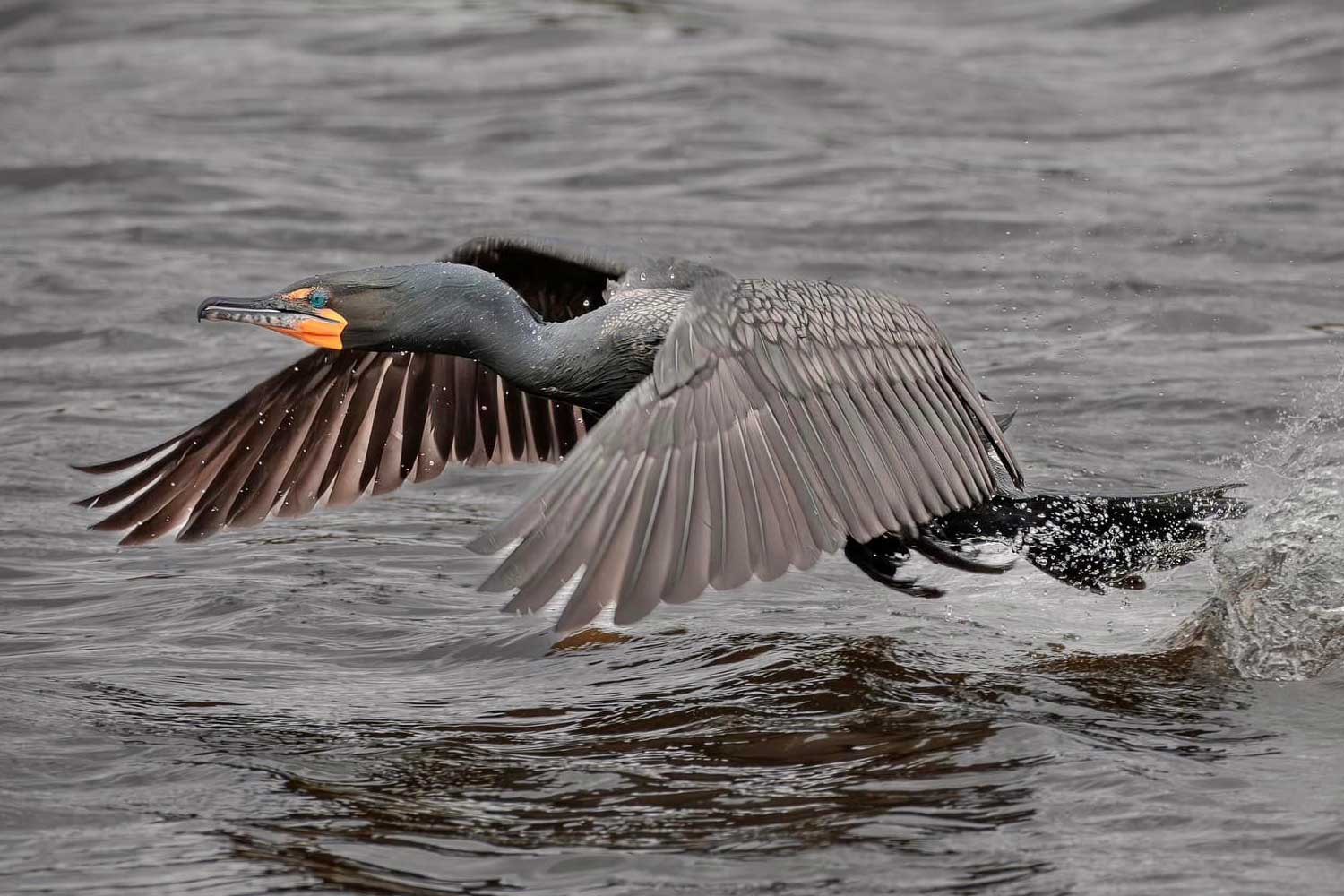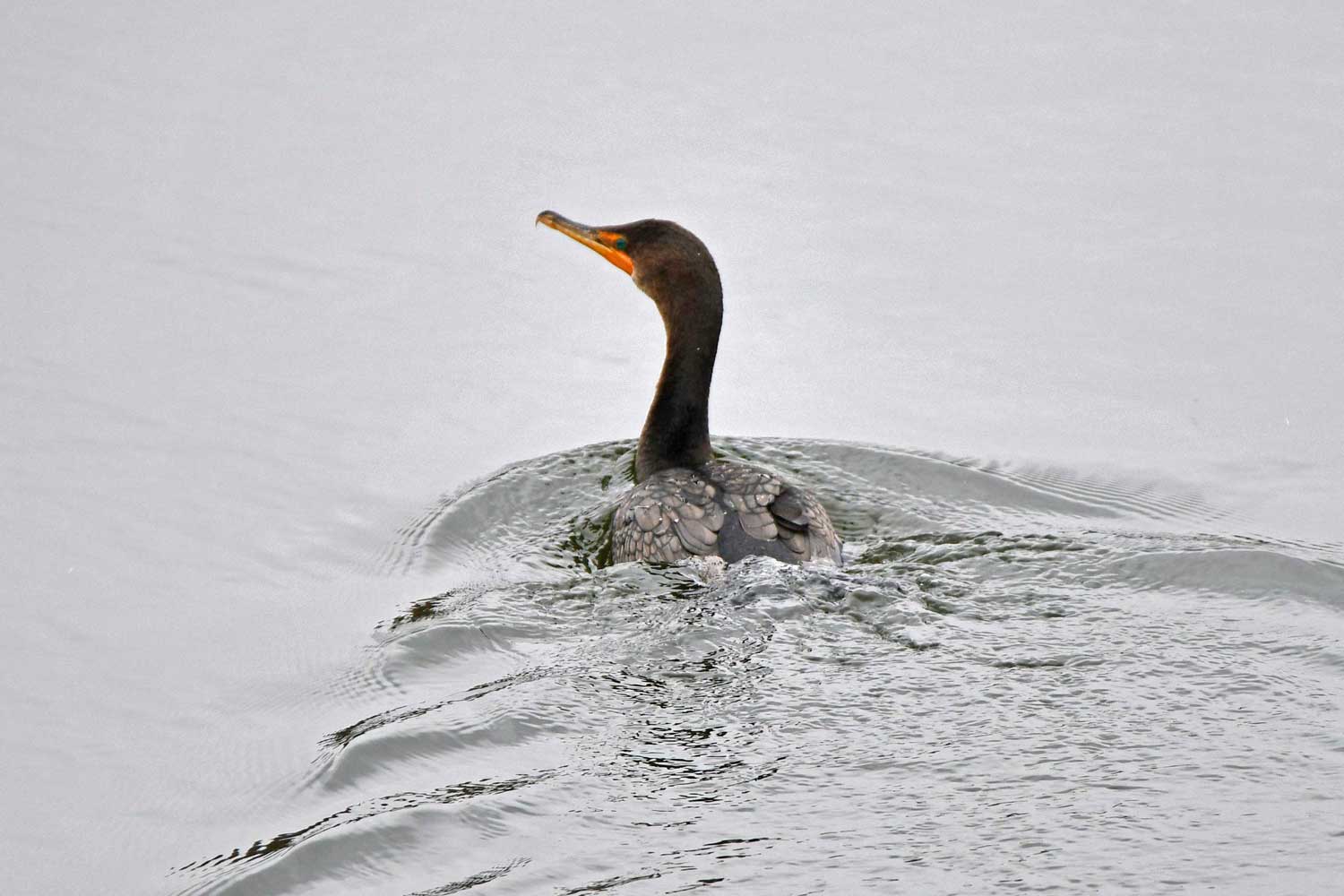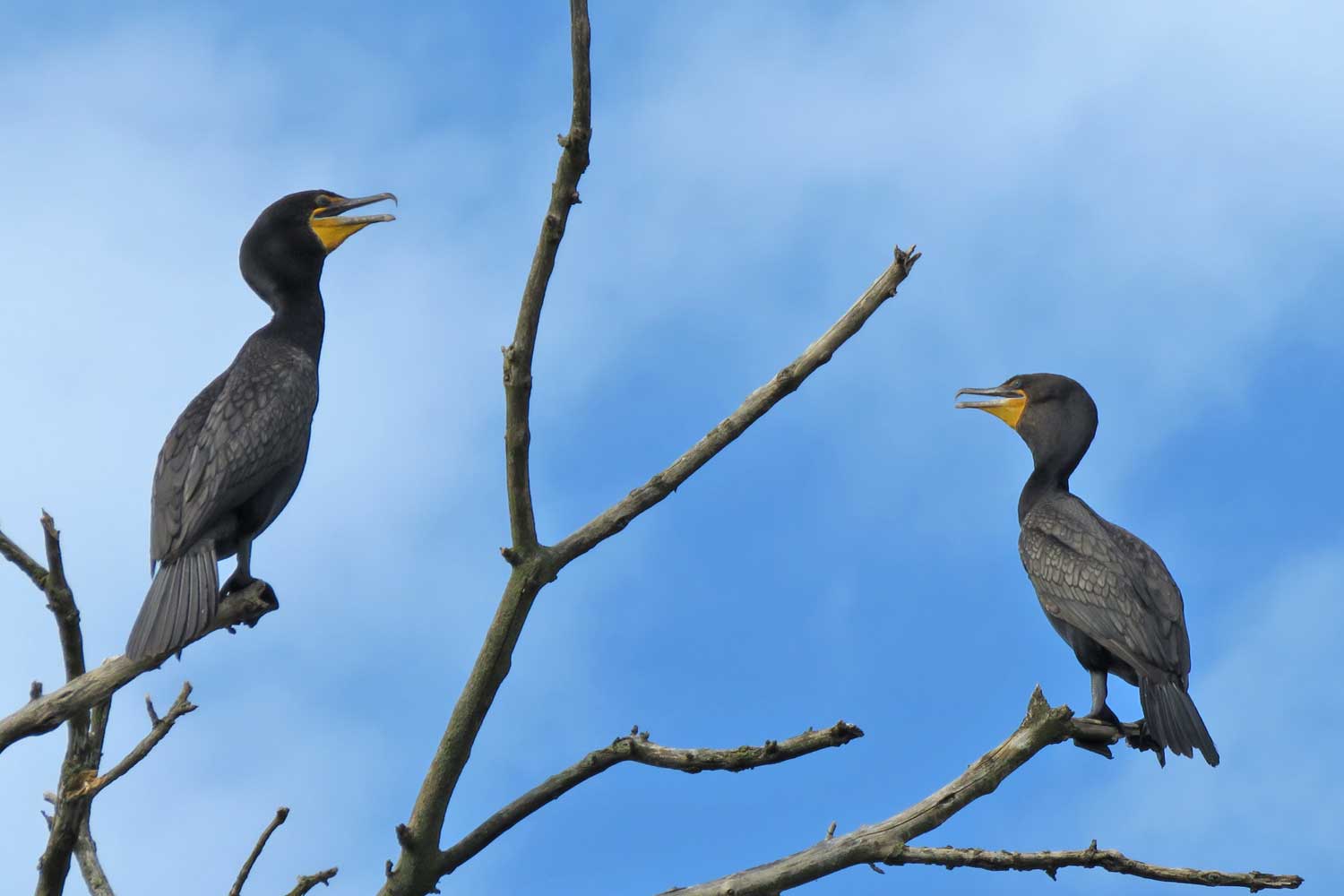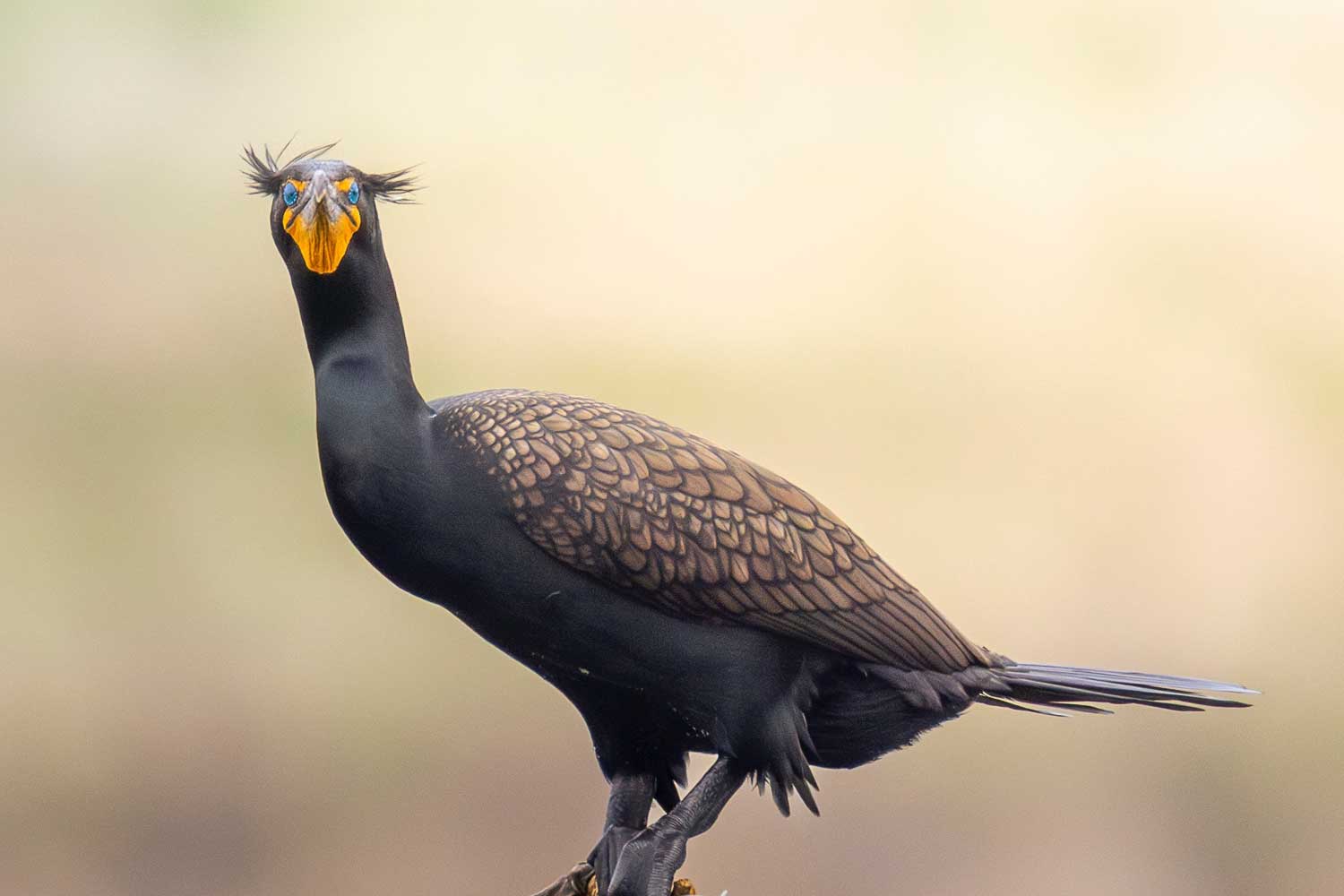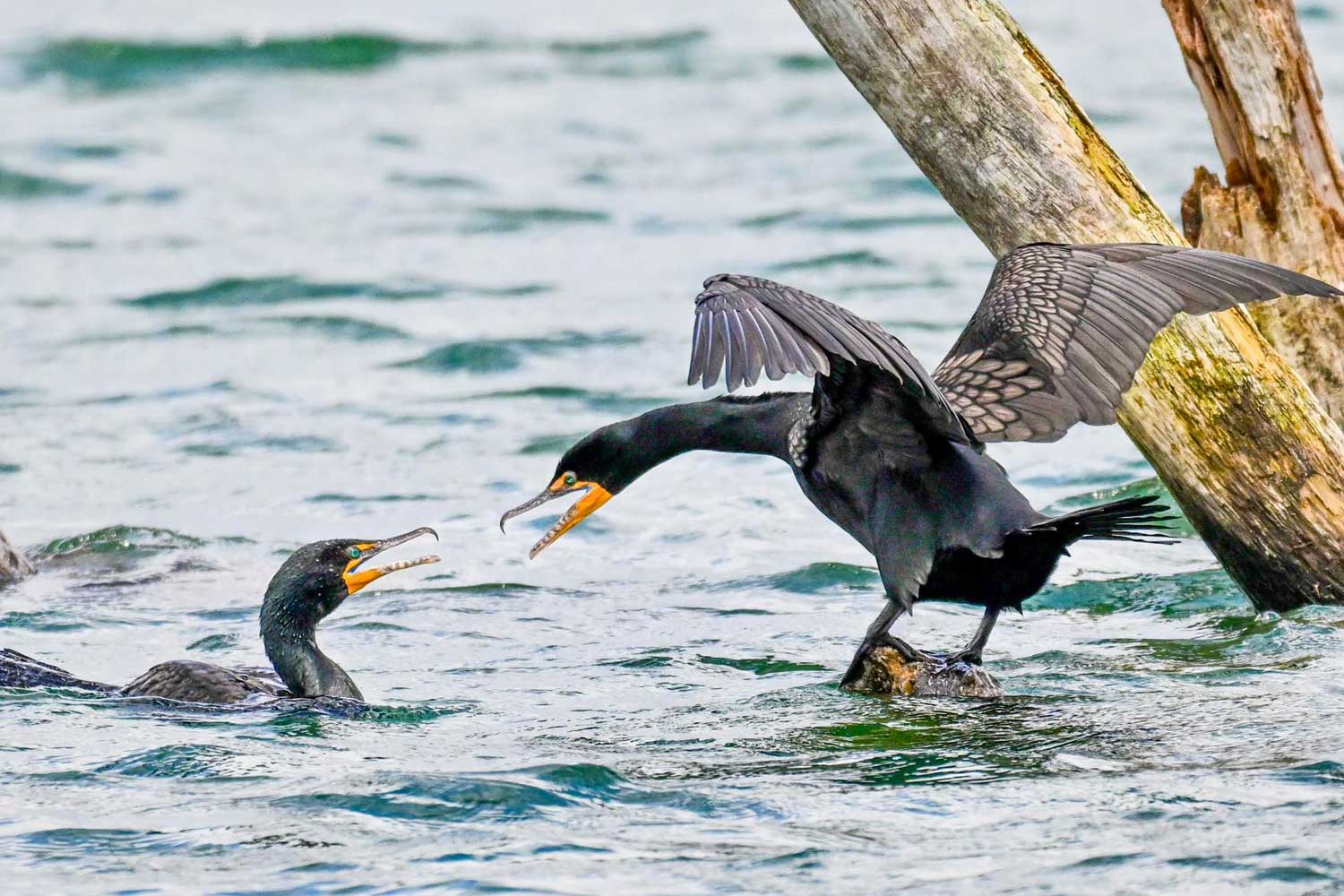Cormorants up close: Learn all about one of our most unique birds
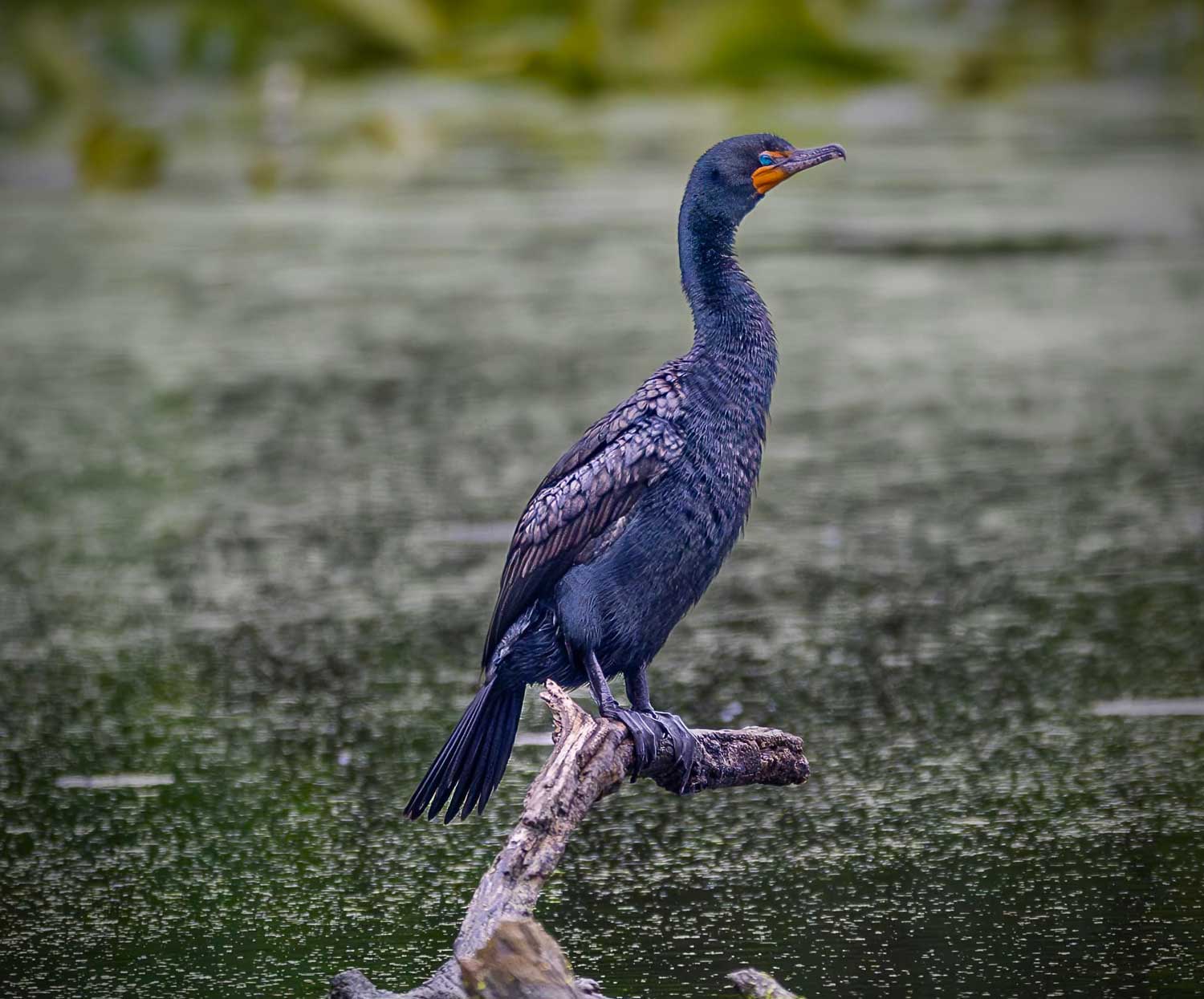
Ducks and geese seem to dominate the landscape around our waterways, but there's another bird you're likely to take notice of too. The sleek black appearance of the double-crested cormorant will likely catch your eye as you scan your local lakes, ponds, rivers and streams. These birds are expert divers and fishers and are perfectly adapted for life on the water.
Double-crested cormorants fall in the middle of the size spectrum of our local waterfowl. They are larger than mallards and smaller than Canada geese. It's their all-black appearance that you will likely notice first, however.
If you look closely, you'll see that they aren't all black. Their sleek black or dark brown feathers are accented by a few splashes of bright color: a patch of orangish-yellow skin on their faces and bright teal or aquamarine colored eyes, according to the Cornell Lab of Ornithology. If you're lucky, you might catch a glimpse of a third splash of color because the inside of their mouths is bright blue.
Double-crested cormorants are named for the double tufts of feathers that appear behind the birds' eyes during breeding season, according to the Missouri Department of Conservation. These double crests of feathers are black on the birds we see locally, but double-crested cormorants in Alaska have white crests that pop against their otherwise black plumage.
The cormorants have an expansive range and can be found across almost the entire United States as well as in parts of Canada and Mexico. The birds we see locally are migratory, and most cormorants will spend their winter in coastal areas along the Atlantic and Pacific oceans as well as the Gulf of Mexico, although some birds may prefer to winter in inland spots where waters don't freeze, according to the National Park Service.
They are adaptable to a variety of aquatic habitats, but they typically prefer larger bodies of water with an ample food supply. They will sometimes establish breeding colonies near smaller bodies of water, and in these cases they will fly to large aquatic areas nearby to hunt, the Cornell Lab reports.
While many waterfowl species eat a varied diet, double-crested cormorants mainly eat fish, supplementing the fish with small amounts of amphibians, crustaceans and insects. How they catch fish is a little different than many other fish-eating birds. Double-crested cormorants will dive entirely under water and chase after the fish, using their webbed feet to swim through the water, according to the Cornell Lab.
Besides their webbed feet, they have several other adaptations to aid them in their pescetarian lifestyle. Their beaks end in a sharp hook that allows them to easily grab fish, and when they catch a fish they will resurface and flip the fish in the air, swallowing it down head first, the park service reports.
Cormorants also have less oil on their feathers, which makes them less buoyant. When they get wet, their feathers become soaked and they are better able to submerge themselves, the Missouri Department of Conservation reports. This adaptation is responsible for one of the unique behavioral traits we often see in cormorants. Because their wings get soaked when they are submerged, they must dry them out. To do this, they will often perch with their wings outstretched as they dry.
Double-crested cormorants nest in colonies, sometimes mixed in with birds such as great egrets and great blue herons. A good place to see this in action is Lake Renwick Heron Rookery Nature Preserve in Plainfield, where breeding colonies of cormorants as well as other birds can be seen on nesting platforms in the lake. The Heron Rookery access at Lake Renwick Preserve is restricted during breeding season to protect the nesting birds, but it is open for weekly bird viewing programs from 8 a.m. to noon Saturdays from May 1 through Aug. 15. You can also see cormorants nesting on the islands at Rock Run Rookery Preserve in Joliet.
Cormorants will build their nests in trees, on rocky cliffs or reefs or even on the ground. The male and female work together to build the nest, mainly using sticks and bulky plant matter, but they will also add litter and other debris to their nests, the park service reports. Their guano is highly acidic, so the trees and vegetation they nest in will often die after a few years as the guano builds up.
Females will lay three or four eggs, and they are incubated for about four weeks before hatching. The young cormorants are born featherless and helpless, with their parents supplying them food and caring for them in the weeks after they hatch. It's not uncommon to see an adult cormorant with a wing outstretched to protect the chicks from the sun, the park service reports.
Young cormorants are dependent on their parents for about a month after hatching. They will learn to fly when they are about five weeks old and then leave the nest to live independently when they are about 9 weeks old, according to the National Park Service.
The double-crested cormorant is one of six cormorant species in North America, and it is the most populous and widespread of the six, the National Park Service reports. It is the only cormorant species in Illinois. The other cormorant species — the Brandt's cormorant, great cormorant, neotropic cormorant, pelagic cormorant and red-faced cormorant — mostly live in coastal areas, and some, like the great cormorant, have ranges that extend beyond North America.
Cormorants are often considered a nuisance by humans and seen as competition for game fish, the Missouri Department of Conservation reports. As a result, they were regularly hunted in the early 1900s, causing their population to decline. Their population was also affected by the use of DDT and other pesticides in the middle 20th century.
Their population has recovered over the past several decades, and today they are classified as a species of low conservation concern. Between 1966 and 2019, their population grew by more about 2.6% per year, and in some places, including the Great Lakes, their population has soared, doubling in as little as five years, the Cornell Lab reports.
